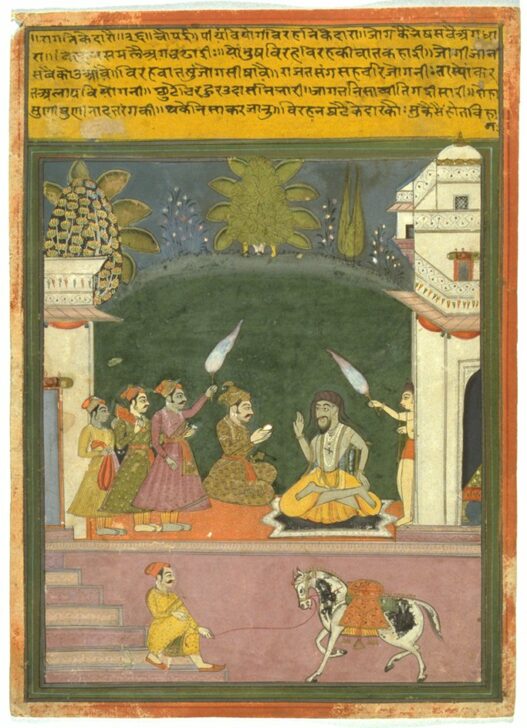Ragamala series: Ragini Kedarau
Artist Unknown, India, Rajasthan, Jaipur School

Description
Subject Matter:
Ragamala paintings draw from aspects of human experience in order to visualize specific moods, emotions, and qualities such as love, anguish, valor, weakness, and strength. A raga in Indian music is a melody consisting of a string of notes in a particular arrangement. Raginis are derivations from or variations of ragas in feminine mode (the basis of these classifications remains unexplained in many cases), and could have different or similar musical structures as ragas. Specific ragas are associated with specific times of the day, seasons, and emotions. When visualized, as here, ragas and raginis are meant to evoke the same affective responses that are allied to their musical modes. The text above the illustration refers to stories or incidents associated with the depicted raga/ ragini, but may not necessarily be narrative-like or descriptive. Drawn from literary tropes and tales that sophisticated writers and viewers would be aware of, the inscriptions are an integral part of the overall experience of this miniature painting. An illiterate viewer, however, could still enjoy the scene without reading the text.
Kedara Ragini is an evening Shaiva melody. This image shows an ascetic engaged in a conversation with a nobleman. The dark sky above them suggests the time of the day. The text describes Kedara as a noble who, upon separating from his lover, takes on the attire and attitude of a yogi.
Physical Description:
Two male figures (possible a king and an ascetic) take over the central pictorial region, and are surrounded by a host of attendants. Two of these attendants hold fly whisks above the central figures' heads, and one tends to a horse in the bottom register. The king holds a shiny white object in his hand, which he then extends towards the bearded and long-haired bare-bodied ascetic.
Usage Rights:
If you are interested in using an image for a publication, please visit https://umma.umich.edu/request-image/ for more information and to fill out the online Image Rights and Reproductions Request Form.